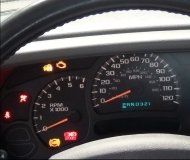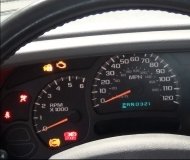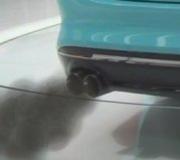Hello!
Well for now just clean the IAC meanwhile I`ll lock for the correct procedure to test and calibrate the IAC on your car (every make and model are diferent)
but. I been thinking. Have you check the EGR?
Here you will find how the EGR works on your engine:
In a typical automotive spark-ignited (SI) engine, 5 to 15 percent of the exhaust gas is routed back to the intake as EGR (thus comprising 5 to 15 percent of the mixture entering the cylinders). The maximum quantity is limited by the requirement of the mixture to sustain a contiguous flame front during the combustion event; excessive EGR in an SI engine can cause misfires and partial burns. Although EGR does measurably slow combustion, this can largely be compensated for by advancing spark timing. The impact of EGR on engine efficiency largely depends on the specific engine design, and sometimes leads to a compromise between efficiency and NOx emissions. A properly operating EGR can theoretically increase the efficiency of gasoline engines via several mechanisms:
Reduced throttling losses. The addition of inert exhaust gas into the intake system means that for a given power output, the throttle plate must be opened further, resulting in increased inlet manifold pressure and reduced throttling losses.
Reduced heat rejection. Lowered peak combustion temperatures not only reduces NOx formation, it also reduces the loss of thermal energy to combustion chamber surfaces, leaving more available for conversion to mechanical work during the expansion stroke.
Reduced chemical dissociation. The lower peak temperatures result in more of the released energy remaining as sensible energy near TDC, rather than being bound up (early in the expansion stroke) in the dissociation of combustion products. This effect is relatively minor compared to the first two.
It also decreases the efficiency of gasoline engines via a few more mechanisms:
Reduced intake charge density. EGR tends to heat the intake charge. This means a bigger piston or stroke must be used to induct the same amount of fuel and air mixture. This results in a bigger and heavier engine.
Reduced specific heat ratio. A lean intake charge has a higher specific heat ratio than an EGR mixture. A reduction of specific heat ratio reduces the amount of energy that can be extracted by the piston.
EGR is typically not employed at high loads because it would reduce peak power output, and it is not employed at idle (low-speed, zero load) because it would cause unstable combustion, resulting in rough idle.
That way if its not operating correctly (stuck open) will lead to a rough idle and lack of "power"
lets check that!
And let me know!
Saturday, October 6th, 2007 AT 12:02 AM



